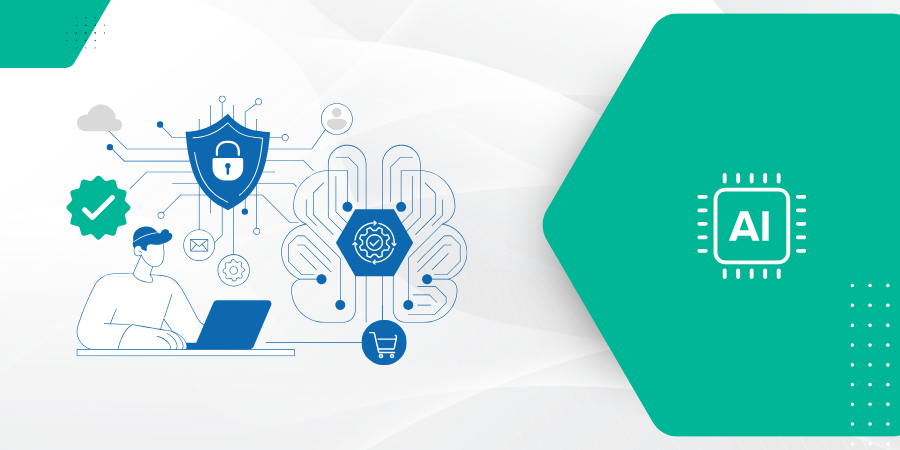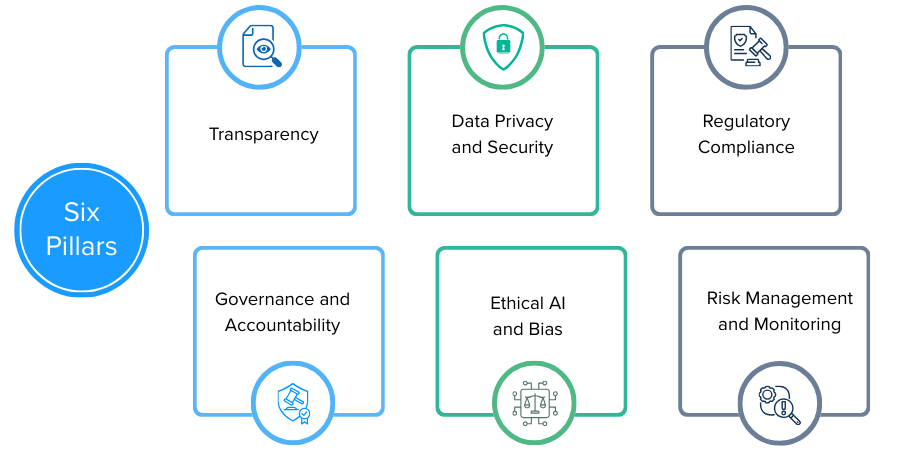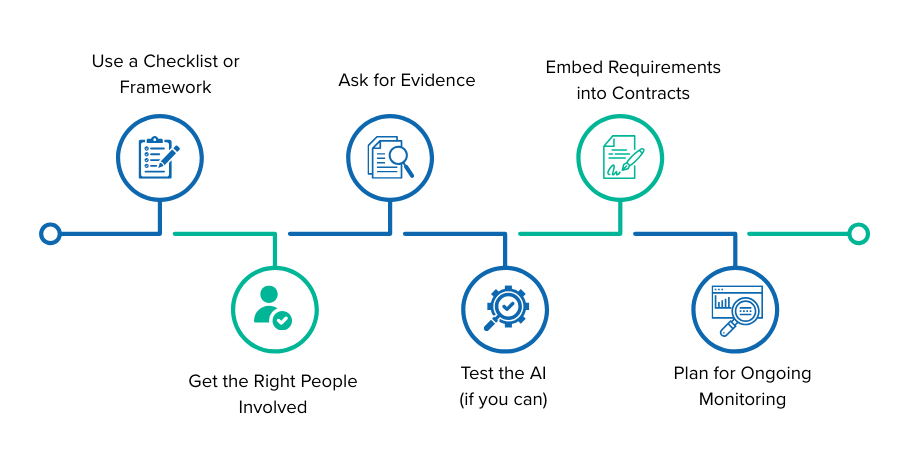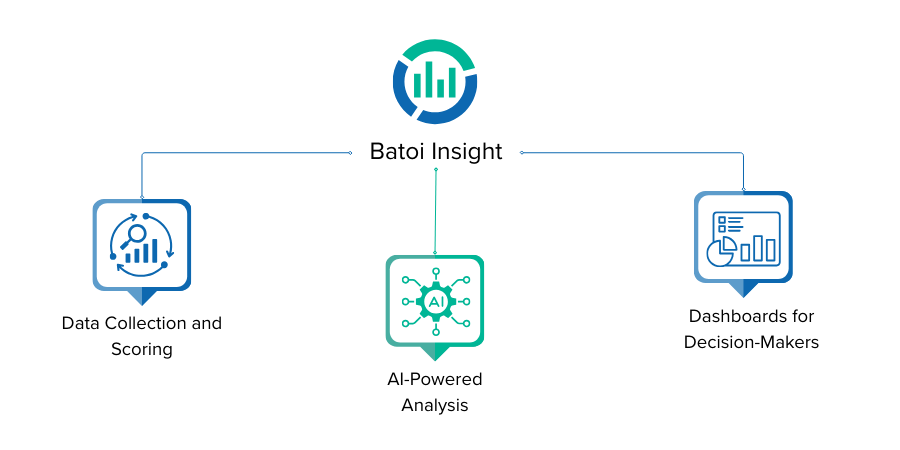
Artificial intelligence can be a game-changer for businesses, but if you’re sourcing AI solutions from vendors, how do you know you can trust those tools? In sectors like finance and healthcare, partnering with an AI vendor without proper vetting is like boarding a ship without checking it for leaks. The stakes are high: regulatory compliance, customer trust, and even lives can be on the line. Below, we highlight the key takeaways from our in-depth white paper on “Vendor Assessment for AI,” boiling it down into practical insights for busy executives and policymakers.
AI Vendors: Why All the Fuss?
Businesses increasingly rely on third-party AI vendors to power everything from customer service chatbots to risk prediction models. This saves time, but also introduces a new kind of third-party risk. If a vendor’s AI tool misbehaves - say it discriminates against specific customers or leaks sensitive data - your organization bears the fallout. Regulators won’t accept “but it was the vendor’s AI” as an excuse; the responsibility (and liability) is yours. That’s why assessing AI vendors isn’t a formality today - it’s a must-do, especially in regulated industries. As one governance expert put it, using third-party AI “necessitates a transformation in how companies assess and manage risks”. In short, you need to know what’s inside the vendor’s AI and that it meets the standards you would hold if you built it yourself.

Key Risk Areas to Consider
So, what should you look at when evaluating an AI vendor? Consider it a 360-degree review of the vendor’s AI product and practices. Here are the core areas you should examine:
- Transparency: Does the vendor clearly explain how their AI works and what data it uses? Avoid black-box solutions. You’ll want vendors who provide documentation and insight into their models. This is crucial for trust and regulatory reasons - for example, banks need explanations for automated decisions to comply with fair lending laws.
- Data Privacy and Security: Ensure the vendor handles data responsibly. Are they compliant with privacy laws (GDPR, HIPAA, etc.)? Do they only use your data with permission and protect it with strong security controls? A data breach or misuse by the AI vendor can become your nightmare, so this area is vital.
- Regulatory Compliance: Check that the vendor knows and follows any laws or regulations relevant to their AI. Different industries have emerging rules - e.g., hiring AI tools requiring bias audits, or medical AI needing approvals. A good vendor proactively stays in compliance, which in turn helps keep you compliant.
- Governance and Accountability: Look at the vendor’s internal governance of AI. Do they have responsible AI policies? Is someone in charge of oversight? Vendors with strong governance will catch and fix issues early. Also, see if they’ll be accountable - will they alert you of incidents or take responsibility for errors? If a vendor has no process and a “move fast and break things” attitude, think twice.
- Ethical AI and Bias: Even if legal, could the AI be doing something ethically problematic? Ask how the vendor mitigates bias or ensures fairness. For instance, if they provide an AI for screening loan applications or resumes, have they tested it for unintended discrimination? Vendors committed to ethical AI will have answers (and maybe even a dedicated ethics team or audits to show you).
- Risk Management and Monitoring: Finally, consider how the vendor manages the ongoing risk of their AI. Do they monitor performance and quality over time? How do they handle updates or model changes? A top-notch vendor will have a plan for continuous monitoring, security against threats to the AI (like hacking attempts), and a clear process to fix issues that arise. Essentially, they don’t just throw the AI over the wall - they stay involved in ensuring it works correctly.
By evaluating these areas, you’re doing due diligence on the vendor’s AI like you would on a new hire or a new piece of machinery. It might seem detailed, but it’s better to uncover concerns before integrating the AI into your critical operations, not after an incident.

Best Practices for Vetting AI Vendors
Conducting an AI vendor assessment can be structured and efficient if you follow some best practices:
- Use a Checklist or Framework: Don’t wing it; use a comprehensive checklist covering all the risk areas above. Many companies create a standard questionnaire for AI vendors. This ensures consistency and makes it easier to compare vendors side by side. Leverage existing frameworks - for example, the U.S. NIST AI Risk Management Framework or industry-specific guides - to inform your checklist.
- Get the Right People Involved: AI is interdisciplinary. Involve IT, data science, compliance, legal, and business stakeholders in the evaluation. A compliance officer might spot a regulatory red flag that a tech person misses, and vice versa. Having a team approach means you evaluate the vendor from all angles.
- Ask for Evidence: Trust but verify. If a vendor claims “our AI has no bias” or “we follow all security best practices,” ask for proof. This could include documentation, third-party audit reports, certifications, or demonstrations. For example, if bias mitigation is claimed, they may show results of a bias test they ran. Those reports can boost confidence if they have a security certification or have undergone a regulatory audit.
- Test the AI (if you can): Whenever feasible, do a pilot or test run with the AI using sample data. This can reveal practical issues. It’s one thing for a vendor to say their predictive model is 95% accurate; it’s another to see it perform on your data. A short trial can validate claims and uncover integration challenges or weird outputs early on.
- Embed Requirements into Contracts: Once you choose a vendor, ensure your contract includes key agreements on AI risk management. Standard clauses might consist of: the vendor will comply with all applicable laws (and notify you if something changes), the vendor will assist with regulatory inquiries about the AI, the vendor must report any security breach or significant error immediately, and maybe even liability clauses if their negligence causes a major issue. While legal language is for the lawyers, you should push for these protections as a business leader.
- Plan for Ongoing Monitoring: Don’t set it and forget it. Decide how you will keep tabs on the AI’s performance once deployed. You might require the vendor to send periodic reports or set up internal reviews at three or six-month intervals. Technology and circumstances change - for instance, a new regulation might require an update, or the AI’s accuracy might drift over time. Having a plan to continuously monitor and reassess the vendor (say, an annual re-certification of the vendor against your checklist) will help ensure things remain in order.
Following these practices transforms vendor selection into a more objective, safer process. You’re effectively building an “early warning system” that catches potential issues on paper before they become real problems in production.

How Tools Like Batoi Insight Can Help
Managing all this manually can be cumbersome, especially if you have multiple AI vendors. Thankfully, there are tools designed to assist with vendor risk assessment. One example is Batoi Insight, a platform that can automate much of the vendor assessment workflow.
- Data Collection and Scoring: You can send out your questionnaires through the platform and get all vendor responses in one place. Batoi Insight can then automatically score the vendor based on your predefined risk model - think of it as getting a report card for each vendor. This quantification quickly shows you who’s low risk and who might be high risk.
- AI-Powered Analysis: Batoi Insight uses AI to analyze the responses and generate summaries and recommendations. For example, if a vendor’s answers indicate they lack a particular security certification, the system might flag that and even suggest “this vendor might need additional security review.” It’s like having a virtual risk analyst comb through the details.
- Dashboards for Decision-Makers: The tool also presents the results in dashboards and visuals, making it easier to brief your team or board. Rather than wading through spreadsheets of answers, you could show a chart of vendor risk ratings or an overview highlighting which risk areas are most common across your vendors.
In short, while you still need to use your judgment, tools like this can save a lot of time and ensure you don’t overlook anything. They bring consistency and depth to the process, and for busy leaders, getting an AI-generated executive summary of a 50-question vendor assessment can be a huge time-saver.
Final Thoughts: Responsible AI Starts with Smart Choices
As a business leader or policymaker, you have the challenge of balancing innovation with risk. AI vendors are bringing incredible solutions - from detecting fraud to diagnosing diseases - and partnering with them can propel your organization forward. But as we’ve emphasized, due diligence is key. By thoroughly vetting AI vendors on their transparency, data practices, compliance, governance, ethics, and risk management, you’re not stifling innovation but safeguarding it. You’re ensuring that adopting an AI tool will be an asset and not a ticking time bomb.
The landscape is evolving rapidly. We may soon see more formal certifications for AI vendors or clearer regulatory expectations on third-party AI oversight. Staying informed and proactive is your best strategy. In the meantime, apply the principles above to every AI vendor engagement: be inquisitive, be cautious, and insist on high standards. Your customers, employees, and stakeholders may never see the behind-the-scenes work you put into vetting an AI vendor, but they will undoubtedly feel the benefits (or the pain) of the AI products you deploy.
By making wise, well-informed choices about AI vendors, you position your organization to enjoy the fruits of AI - efficiency, insight, competitive edge - while sleeping more soundly at night knowing you’ve kept the risks in check. In the world of AI, as in so many others, an ounce of prevention is worth a pound of cure. So ask those hard questions now, and you’ll likely save yourself from crises later. Here’s to harnessing AI’s power responsibly and successfully!
Please download the white paper at https://www.batoi.com/whitepapers/post/vendor-assessment-ai-strategic-guide-business-leaders

 Batoi Corporate Office
Batoi Corporate Office